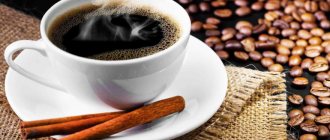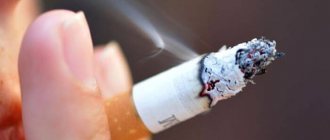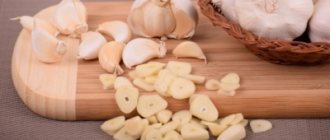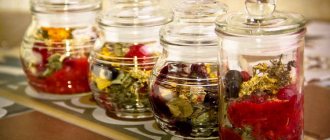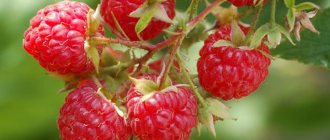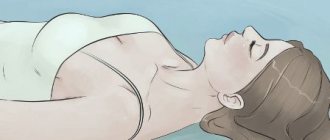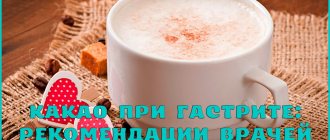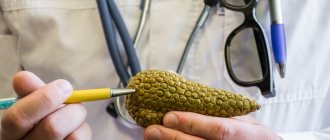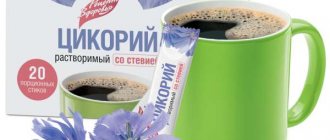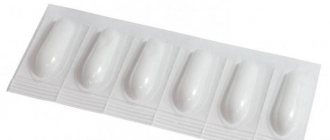Onions have long been considered one of the most beneficial plants for the body. Due to its healing properties, it has found wide application in various fields of medicine and cosmetology. But is this plant so harmless? Can it be used in any form for any pathology? Is it possible to eat onions if you have pancreatitis - inflammation of the pancreas? This will be discussed in this article.
Useful properties of onions
Onions have the following beneficial properties:
- Antibacterial - the phytoncides contained in its essential oils destroy pathogenic bacteria (streptococci, tuberculosis bacillus, dysentery and diphtheria bacilli).
- Anti-carcinogenic - the substance quercetin has the ability to fight cancer.
- Antioxidant (due to the content of vitamins A and C).
- Analgesic - relieves headaches, juice helps with rheumatic pain, wasp bites, compress with pulp - with inflammation, abscesses, long-healing wounds.
- Normalizes metabolism (burns lipids, promotes the digestion of carbohydrates).
- Immunostimulating (high content of ascorbic acid).
- Dehydration (relieves the body of excess fluid).
- Antiatherosclerotic (lowers cholesterol levels).
- Hypoglycogenic.
- Increases potency (juice helps sperm production).
- Cardiac stimulant (element K supports myocardial nutrition).
- Nourishes (due to the pigment carotene) and cleanses the skin from spots and freckles.
- Protective (prevents the development of atrophy, in particular, of pancreas cells).
- Stimulates digestion (affects the production of insulin and digestive enzymes).
- Sleeping pills.
Onions in the acute stage of pancreatitis
Use in its raw form in the acute stage is strictly prohibited, because under the influence of essential oils and organic acids, the production of pancreas secretion, which breaks down its tissues, is enhanced.
Dietary fiber activates peristalsis, which leads to dyspeptic symptoms. Hard and coarse fiber is difficult to digest; malic, citric and ascorbic acids cause the production of pancreatic juice and enzymes, thereby enhancing the digestive processes, during which self-digestion of the gland occurs. All of the above provokes an even greater increase in inflammation.
Harm and contraindications
Onions are a healthy vegetable, but unfortunately, people with pancreatitis are not always allowed to eat them.
A number of its components greatly aggravate the course of the disease:
- Essential oils. These aggressive compounds irritate the mucous membrane and stimulate the production of pancreatic juice. As a result, the pancreas suffers from the action of its own enzymes.
- Polysaccharides and complex carbohydrates. These substances are involved in the formation of fiber, the content of which in onions ranges from 1.7 to 2.6 g per 100 g. To digest fiber, the intestines are forced to work hard. Against the background of pancreatitis, this will provoke diarrhea, bloating and colic.
- Ascorbic, malic and citric acids. These substances are necessary for the body to function properly, but at the same time they increase the secretion of the pancreas.
- Onion juice has a detrimental effect on the gallbladder . Its use provokes cholecystitis.
The antibacterial properties of onions are not always beneficial. By destroying harmful microbes and bacteria, the vegetable also causes damage to the intestinal microflora.
In some cases, onions are strictly contraindicated for patients with pancreatitis:
- If the patient has an acute attack. In this case, stop eating onions immediately and consult a doctor.
- In case of severe disturbances in the functioning of the pancreas. If the gland has atrophied and produces almost no enzymes, it is necessary to tighten the diet by excluding vegetables from it.
- If during remission there have already been repeated exacerbations, the cause of which was onion. This happens especially often during unstable remission or if the patient has exceeded the dosage of the product authorized by the doctor.
Various types of onions for illness
Any type of vegetable in its raw state is contraindicated in the acute stage. In the remission stage of the chronic form:
- Onions can be consumed boiled, stewed, baked in the initial stages and in raw crushed form during remission that lasts at least a year. The maximum daily dose is half a head.
- Red onions are tolerated more calmly, as they are less pungent and pungent. But, despite this, it is recommended to use it only in stable remission.
- Leeks are eaten only when thermally processed due to the high content of substances that provoke an attack.
- Baton has all the properties of onions, but it contains more vitamin C, which causes self-digestion of the pancreas, so it is used only boiled, stewed, or baked.
- Shallot increases the secretion of gastric juice, which entails an exacerbation of the process, and therefore its use is contraindicated at any stage, in any form.
Eating green feathers
Green feathers contain a lot of essential oils that provoke an attack even with a single use. Therefore, they are shown only in the improvement stage in the amount of 1–2 feathers per salad, pre-heat-treated.
It should be noted that in the form of pancreatitis with impaired carbohydrate metabolism, feathers, which contain glucinin, which breaks down glucose, contribute to hypoglycemia.
Leek and its properties
Leek is a very valuable nutritious product. In terms of the content of vitamins, minerals, proteins and carbohydrates, it is inferior to turnips, but its calorie content is slightly higher. The comparative composition of vegetables can be seen in the table.
| Composition (100 g) | Onion | Leek |
| Squirrels | 1,7 | 1 g |
| Fats | ||
| Carbohydrates | 9,5 | 13 g |
| Vitamins | A, B9, B5, B6, H, B1, B2, C, E, PP | B1, B2, E, C, carotene, folic acid |
| Minerals | silicon, molybdenum, rubidium, nickel, aluminum, fluorine, cobalt, potassium, manganese, copper, magnesium, phosphorus, iron, calcium, boron, iodine, zinc, sulfur, sodium, chlorine, chromium | Salts of magnesium, potassium, sodium, iron |
| Essential oils | There is | There is |
| Calorie content | 44.8 kcal | 50 kcal |
Properties of leek:
- diuretic and choleretic (used for cholecystitis, liver diseases),
- anticholesterol (prevents the formation of cholesterol plaques and the absorption of cholesterol),
- antianemic (vitamin C enhances the absorption of iron, which promotes the production of hemoglobin),
- nootropic (magnesium, phosphorus and folic acid improve memory, concentration, have a beneficial effect on the functioning of the nervous system),
- dietary (low calorie content),
- restorative (used for exhaustion, vitamin deficiencies),
- antibacterial (destroys infection in the upper respiratory tract, intestines, and also in the genitourinary tract in women),
- antirheumatoid,
- anti-carcinogenic (contains a substance that reduces the growth of cancer cells of the ovaries, intestines and prostate),
- restoring and preserving vision (essential oils).
Leek also promotes a favorable pregnancy without complications due to the presence of folic acid in the composition.
Use of onions in food
The human diet should include turnips both fresh and boiled, stewed, fried, and baked. There is almost no dish that does not include this vegetable. Next we will talk about special recipes for pancreatitis.
Varieties of onions and their benefits
For patients with pancreatitis, it is recommended to eat sweet varieties of onions. Varieties of onions are shallots and leeks. The latter type promotes active metabolism in the body and has a pronounced diuretic effect. Medicines synthesized on its basis are recommended for use in diagnosed kidney stones, obesity, and gout.
Adding leeks to vegetable puree soup is advisable for diseases of the gastrointestinal tract. The most important thing: the spicy vegetable used must undergo high-quality heat treatment, which will reduce its negative impact on the mucous membranes of the organs. After softening its consistency, the intense stimulation of gland cells will significantly decrease. One of the main functions of the organ is the production of digestive enzymes, another is the hormone insulin.
The onion leaves of the plant look like green tubes, hollow (empty) inside. They can reach up to 80 cm in height. Based on the color of the numerous scales of the bulb (underground shoot), they are distinguished: white, yellow, purple; Shape: round, flattened, pear-shaped. The substance that gives them their color is anthocyanin.
Garden culture is widespread and ubiquitous. Also found as a wild weed. Without any hassle, it can be grown all year round in special pots, right on the windowsill.
Methods for preparing onions for pathology
For this pathology, it is recommended to use the vegetable heat-treated (but not fried!).
Recipe No. 1. Eat a warm onion baked in the oven until soft or boiled in the morning on an empty stomach 30 minutes before a meal (start with half an onion a day, working up to a whole one).
Recipe No. 2. Syrup. Grind 1 kg of vegetable, add two glasses of brown sugar and bake until smooth and yellowish. Drink a tablespoon of this syrup 3 times a day before meals for 1 month.
Recipe No. 3. Jam. Chop 1 kg of onion, add two glasses of regular sugar. The mixture should be well soaked, then cook it like jam until dark brown. 1 tablespoon per day.
It must be taken into account that the combination of turnip and sugar in large quantities increases inflammation, while in small quantities it has a beneficial effect on the body.
In different phases of the disease, the assessment of suitability for onion consumption is as follows:
- in the acute phase – minus 10,
- in case of exacerbation of a chronic process – minus 8,
- in the improvement phase - plus 4.
- assessment of compliance with diet for chronic conditions – 4
Acceptable daily dosage of onions
The permissible amount of a vegetable in the diet depends on the form in which it will be consumed. So, as a medicine, you should not eat more than a tablespoon of syrup or jam, since the combination of onions and sugar can be harmful for inflammation in large quantities, but in small quantities it will have a strong therapeutic effect.
The maximum amount of fresh onion is half a head. You can use it to prepare any diet-friendly dishes or eat it whole, boiled or baked. Green onions for pancreatitis can be included in the menu in quantities of no more than a small bunch of about thirty grams. If the condition worsens, treatment and use of the product should be stopped immediately.
It is important to note that the presence of boiled onions in the patient’s diet for pancreatitis is not always acceptable. In some cases, even a small amount can cause a sharp deterioration in the condition even during a period of stable remission. Therefore, it should be introduced into the diet very carefully, in small portions and taking into account the characteristics of each patient.
Onions in folk medicine
Due to its therapeutic properties, onions are widely used in folk medicine. Here are some tips:
- For atherosclerosis, drink a mixture of juice and honey 1:1 3 times a day an hour before meals for a month.
- For hair loss and dandruff, rub the plant's pulp into your hair before washing your hair.
- When suppuration occurs, onions baked in dough are applied to the skin.
- Swabs with plant pulp are placed on the wounds.
- For otitis media, tampons soaked in onion juice are placed in each ear.
- For abscesses in the ear, you need to cut a hole in a raw onion, pour 20 g of linseed oil into it and bake in the oven. For 3–5 days, drip the mixture into the sore ear.
- For joint pain, apply compresses with gruel to the sore spot.
- For bronchitis, grind 1 turnip with 1 tablespoon of sugar, boil and drink 1 teaspoon every 2 hours.
- For a sore throat, an onion compress is indicated (grate the pulp, squeeze out the juice onto a piece of gauze and around the neck).
- For tracheitis, inhalations with onions are useful (inhale onion vapors for 10 minutes, covered with a towel).
Bibliography
- Ivashkin V.T., Shevchenko V.P. Nutrition for diseases of the digestive system: Scientific publication. M. GOETAR-Media, 2005
- Samsonov M. A. Criteria for assessing the differentiated use of diet therapy. Bulletin of the AMN. 1986 No. 11 pp. 42–49.
- Fomina L.S. The influence of the nature of nutrition on the secretory activity of the pancreas. Nutrition Issues 1966 No. 5 pp. 22–23.
- Loranskaya T.I. Diet therapy for chronic pancreatitis Publisher: Miklos 2007
- Ivashkin V. T., Sheptulin A. A. Diarrhea syndrome. M. Geotar. Medicine 2002
